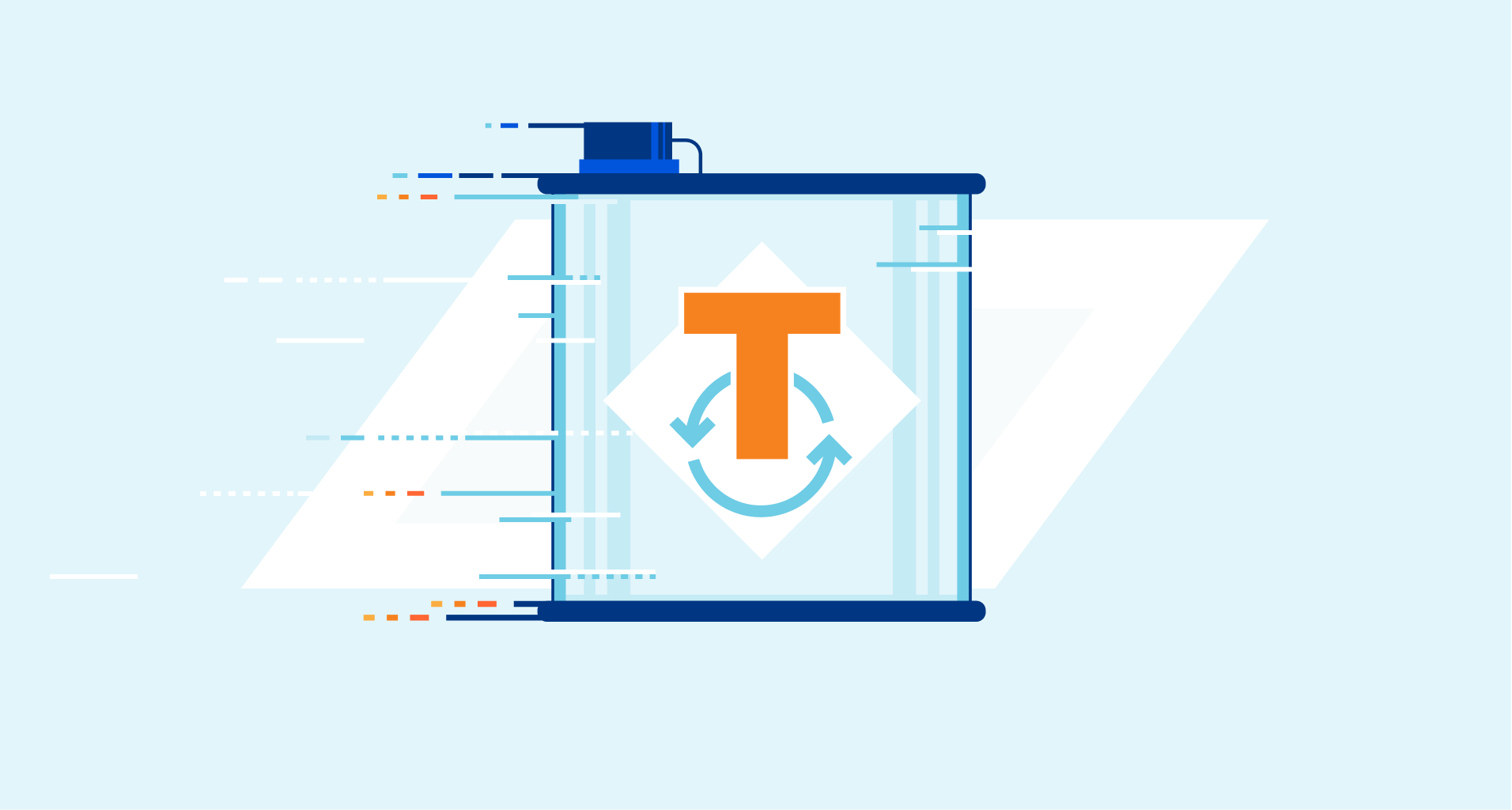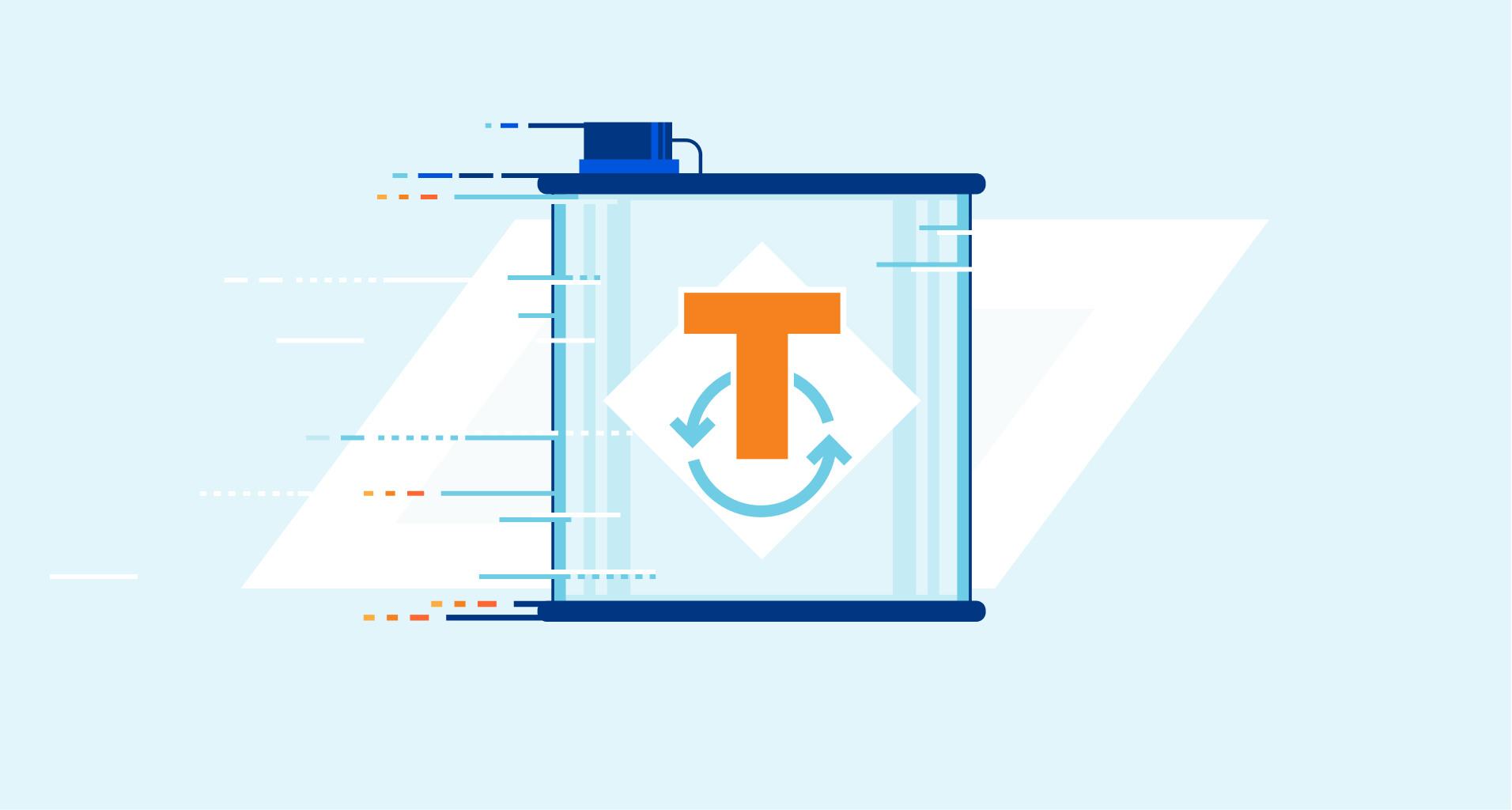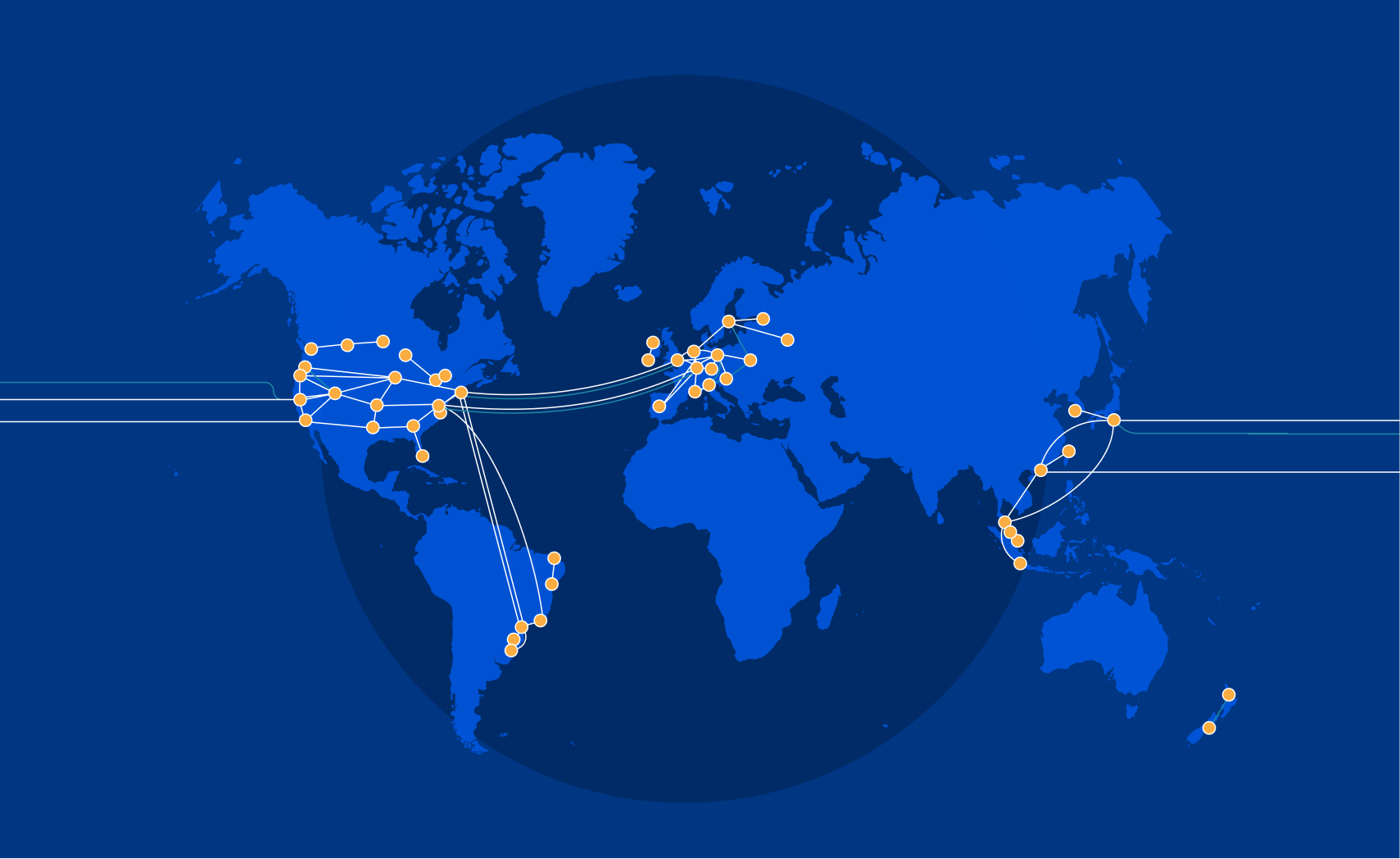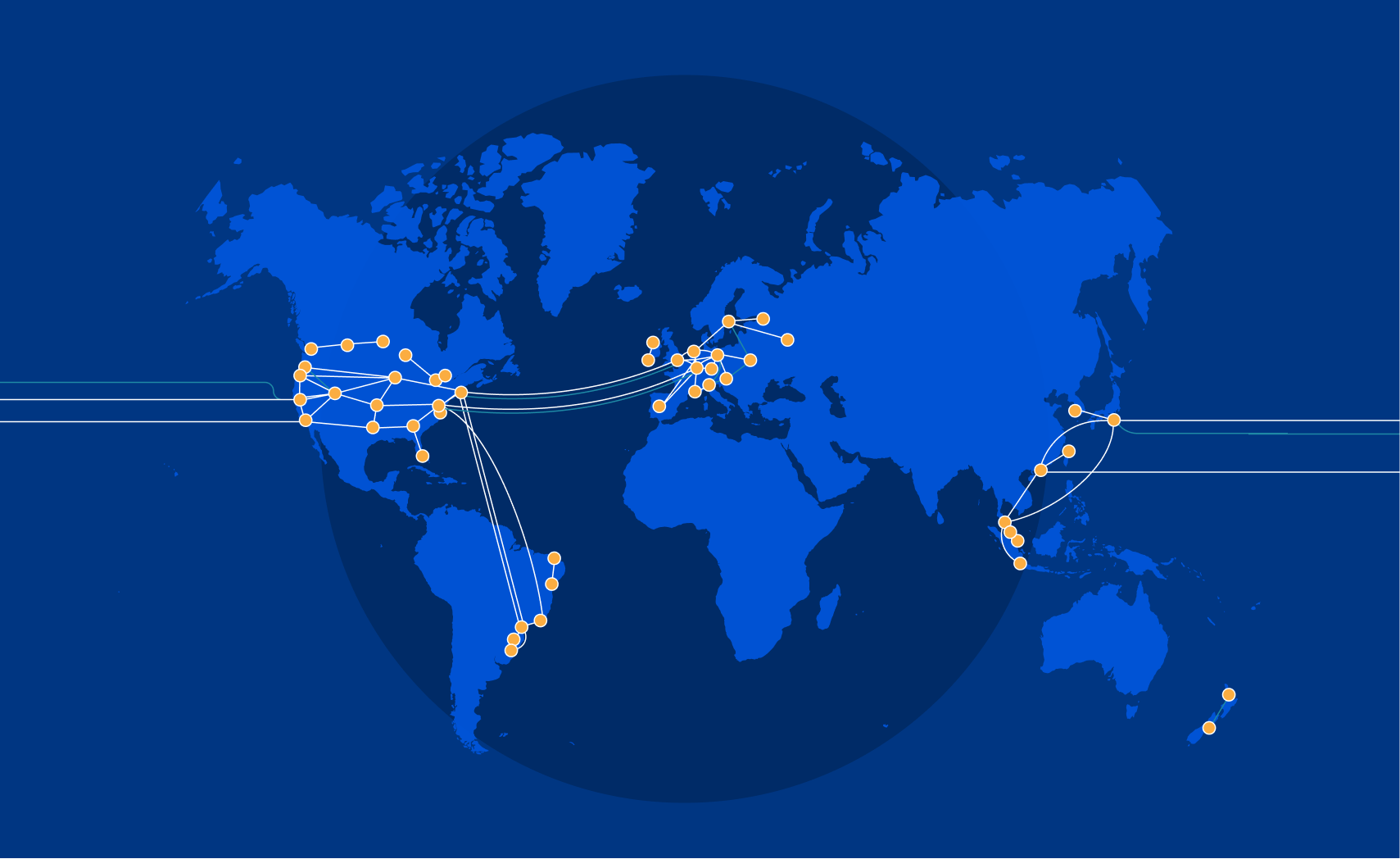Project Myriagon: Cloudflare Passes 10,000 Connected Networks


During Speed Week, we’ve talked a lot about the products we’ve improved and the places we’ve expanded to. Today, we have a final exciting announcement: Cloudflare now connects with more than 10,000 other networks. Put another way, over 10,000 networks have direct on-ramps to the Cloudflare network.
This is the culmination of a special project we’ve been working on for the last few months dubbed Project Myriagon, a reference to the 10,000-sided polygon of the same name. In going about this project, we have learned a lot about the performance impact of adding more direct connections to our network — in one recent case, we saw a 90% reduction in median round-trip end-user latency.
But to really explain why this is such a big milestone, we first need to explain a bit about how the Internet works.
More roads leading to Rome
The Internet that all know and rely on is, on a basic level, an interconnected series of independently run local networks. Each network is defined as its own “autonomous system.” These networks are delineated numerically with Autonomous Systems Numbers, or ASNs. An ASN is like the Internet version of a zip code, a short number directly mapping Continue reading
Cloudflare Pages is Lightning Fast


When we announced Cloudflare Pages in April, our goal wasn’t to bring just any web development tool to the table. As a front-end developer, it’s your responsibility to bring the ideas of your marketing, product and engineering teams to life by crafting a beautifully engaging experience for every customer. With all the hard work that goes into the development process — turning mock-ups to code, getting input from your team, staging and testing changes — you want the best performance possible for your site to showcase your work and optimize your customers’ experience.
Cloudflare Pages is the most secure and most scalable Jamstack platform to build and deploy your sites on the edge. But how is Pages so fast?
It comes down to three key reasons:
- Pages is built on one of the fastest networks in the world, putting us within 50 ms of 95% of the world’s Internet-connected population. Delivering Pages from this network is the basis of our speed.
- Cloudflare helps define and implement next generation standards, like QUIC + HTTP/3 and Early Hints, that push Pages performance to the next level.
- Pages has a killer developer experience that makes it easy to build the fastest websites on Continue reading
Profiling Your Workers with Wrangler


In the year since Cloudflare’s launch of Workers Unbound, developers have unlocked the ability to run computationally intensive workloads on the Cloudflare edge network — like image processing, game logic, and other complex algorithms. With all that additional computing power comes a host of questions around performance. Our customers often ask us how they can profile or monitor their Workers to see where they spend the most CPU time, or to see whether their changes improve performance.
Here at Cloudflare, we not only want to build the fastest, most affordable, and most flexible compute platform at the edge; we also want to make the lives of our developers easier in building their applications. To do this, Cloudflare has begun to integrate with existing tools — places our developers feel comfortable and efficient in their day-to-day work. To help measure performance of our customers’ Workers, we’re beginning to integrate with the Chrome DevTools protocol. Just like you can use chrome://inspect to debug your Node backend, you can also use it to profile your Cloudflare Workers.
Introducing Chrome DevTools Integration (Beta)
We’re starting off this integration with beta support for local CPU profiling, using Wrangler. To show off how to use this Continue reading
Benchmarking Edge Network Performance: Akamai, Cloudflare, Amazon CloudFront, Fastly, and Google


During Speed Week we’ve talked a lot about services that make the web faster. Argo 2.0 for better routing around bad Internet weather, Orpheus to ensure that origins are reachable from anywhere, image optimization to send just the right bits to the client, Tiered Cache to maximize cache hit rates and get the most out of Cloudflare’s new 25% bigger network, our expanded fiber backbone and more.
Those things are all great.
But it’s vital that we also measure the performance of our network and benchmark ourselves against industry players large and small to make sure we are providing the best, fastest service.
We recently ran a measurement experiment where we used Real User Measurement (RUM) data from the standard browser API to test the performance of Cloudflare and others in real-world conditions across the globe. We wanted to use third-party tests for this, but they didn’t have the granularity we wanted. We want to drill down to every single ISP in the world to make sure we optimize everywhere. We knew that in some places the answers we got wouldn’t be good, and we’d need to do work to improve our performance. But without detailed analysis across the Continue reading
Announcing Project Turpentine: an easy way to get off Varnish


When Varnish and the Varnish Configuration Language (VCL) were first introduced 15 years ago, they were an incredibly powerful combination to configure caching on servers (and your networks). It seemed a logical choice for a language to configure CDNs — caching in the cloud.
A lot has changed on the Internet since then.
In particular, caching is just one of many things that “CDNs” are expected to do: load balancing, DDoS protection, rate limiting, transformations, synthetic responses, routing and more. But above all what “CDNs” need to be is programmable, not just configurable.
Configuration went from a niche activity to a much more common — and often involved — requirement. We’ve heard from a lot of teams that want to remove critical dependencies on the one person they have who knows how to make configuration changes — because they’re the only one on the team who knows how to write in VCL.
But it’s not just about who can write VCL — it’s what VCL is increasingly being asked to do. A lot of our customers have told us that they have much greater expectations for what they expect the network to do: they don’t just want to configure Continue reading
Early Hints: How Cloudflare Can Improve Website Load Times by 30%


Want to know a secret about Internet performance? Browsers spend an inordinate amount of time twiddling their thumbs waiting to be told what to do. This waiting impacts page load performance. Today, we’re excited to announce support for Early Hints, which dramatically improves browser page load performance and reduces thumb-twiddling time.
In initial tests using Early Hints, we have observed more than 30% improvement to page load time for browsers visiting a website for the first time.
Early Hints is available in beta today — Cloudflare customers can request access to Early Hints in the dashboard’s Speed tab. It’s free for all customers because we think the web should be fast!
Early Hints in a nutshell
Browsers need instructions for what to render and what resources need to be fetched to complete “painting” a given web page. These instructions come from a server response. But the servers sending these responses often need time to compile these resources — this is known as “server think time.” While the servers are busy during this time… browsers sit idle and wait.
Early Hints takes advantage of “server think time” to asynchronously send instructions to the browser to begin loading resources while the Continue reading
The Zero Trust platform built for speed


Cloudflare for Teams secures your company’s users, devices, and data — without slowing you down. Your team should not need to sacrifice performance in order to be secure. Unlike other vendors in the market, Cloudflare’s products not only avoid back hauling traffic and adding latency — they make your team faster.
We’ve accomplished this by building Cloudflare for Teams on Cloudflare. All the products in the Zero Trust platform build on the improvements and features we’re highlighting as part of Speed Week:
- Cloudflare for Teams replaces legacy private networks with Cloudflare’s network, a faster way to connect users to applications.
- Cloudflare’s Zero Trust decisions are enforced in Cloudflare Workers, the performant serverless platform that runs in every Cloudflare data center.
- The DNS filtering features in Cloudflare Gateway run on the same technology that powers 1.1.1.1, the world’s fastest recursive DNS resolver.
- Cloudflare’s Secure Web Gateway accelerates connections to the applications your team uses.
- The technology that powers Cloudflare Browser Isolation is fundamentally different compared to other approaches and the speed advantages demonstrate that.
We’re excited to share how each of these components work together to deliver a comprehensive Zero Trust platform that makes your team faster. Continue reading
Magic makes your network faster


We launched Magic Transit two years ago, followed more recently by its siblings Magic WAN and Magic Firewall, and have talked at length about how this suite of products helps security teams sleep better at night by protecting entire networks from malicious traffic. Today, as part of Speed Week, we’ll break down the other side of the Magic: how using Cloudflare can automatically make your entire network faster. Our scale and interconnectivity, use of data to make more intelligent routing decisions, and inherent architecture differences versus traditional networks all contribute to performance improvements across all IP traffic.
What is Magic?
Cloudflare’s “Magic” services help customers connect and secure their networks without the cost and complexity of maintaining legacy hardware. Magic Transit provides connectivity and DDoS protection for Internet-facing networks; Magic WAN enables customers to replace legacy WAN architectures by routing private traffic through Cloudflare; and Magic Firewall protects all connected traffic with a built-in firewall-as-a-service. All three share underlying architecture principles that form the basis of the performance improvements we’ll dive deeper into below.
Anycast everything
In contrast to traditional “point-to-point” architecture, Cloudflare uses Anycast GRE or IPsec (coming soon) tunnels to send and receive traffic for customer Continue reading
Cloudflare Backbone: A Fast Lane on the Busy Internet Highway


The Internet is an amazing place. It’s a communication superhighway, allowing people and machines to exchange exabytes of information every day. But it's not without its share of issues: whether it’s DDoS attacks, route leaks, cable cuts, or packet loss, the components of the Internet do not always work as intended.
The reason Cloudflare exists is to help solve these problems. As we continue to grow our rapidly expanding global network in more than 250 cities, while directly connecting with more than 9,800 networks, it’s important that our network continues to help bring improved performance and resiliency to the Internet. To accomplish this, we built our own backbone. Other than improving redundancy, the immediate advantage to you as a Cloudflare user? It can reduce your website loading times by up to 45% — and you don’t have to do a thing.
The Cloudflare Backbone
We began building out our global backbone in 2018. It comprises a network of long-distance fiber optic cables connecting various Cloudflare data centers across North America, South America, Europe, and Asia. This also includes Cloudflare’s metro fiber network, directly connecting data centers within a metropolitan area.

Our backbone is a dedicated network, Continue reading
Unboxing the Last Mile: Introducing Last Mile Insights


“The last 20% of the work requires 80% of the effort.” The Pareto Principle applies in many domains — nowhere more so on the Internet, however, than on the Last Mile. Last Mile networks are heterogeneous and independent of each other, but all of them need to be running to allow for everyone to use the Internet. They’re typically the responsibility of Internet Service Providers (ISPs). However, if you’re an organization running a mission-critical service on the Internet, not paying attention to Last Mile networks is in effect handing off responsibility for the uptime and performance of your service over to those ISPs.
Probably not the best idea.
When a customer puts a service on Cloudflare, part of our job is to offer a good experience across the whole Internet. We couldn’t do that without focusing on Last Mile networks. In particular, we’re focused on two things:
- Cloudflare needs to have strong connectivity to Last Mile ISPs and needs to be as close as possible to every Internet-connected person on the planet.
- Cloudflare needs good observability tools to know when something goes wrong, and needs to be able to surface that data to you so that you can be Continue reading
Cloudflare Images Now Available to Everyone


Today, we are launching Cloudflare Images for all customers. Images is a single product that stores, resizes, optimizes and serves images. We built Cloudflare Images so customers of all sizes can build a scalable and affordable image pipeline in minutes.
Store images efficiently
Many legacy image pipelines are architected to take an image and create multiple copies of it to account for different sizes and formats. These copies are then stored in a storage bucket and delivered using a CDN. This architecture can be hard to maintain and adds infrastructure cost in unpredictable ways.
With Cloudflare Images, you don’t need to worry about creating and storing multiple versions of the same image in different sizes and formats. Cloudflare Images makes a clear distinction between your stored images and the variants. Once you upload an image, you can apply any defined variant to the uploaded image. The variants and different formats don’t count towards your stored images quota.
This means that when a user uploads a picture that you need to resize in three different ways and serve in two different formats, you pay for one stored image instead of seven different images (the original, plus three variants for each of Continue reading
Discovering what’s slowing down your website with Web Analytics


Web Analytics is Cloudflare’s privacy-focused real user measurement solution. It leverages a lightweight JavaScript beacon and does not use any client-side state, such as cookies or localStorage, to collect usage metrics. Nor does it “fingerprint” individuals via their IP address, User Agent string, or any other data.
Cloudflare Web Analytics makes essential web analytics, such as the top-performing pages on your website and top referrers, available to everyone for free, and it’s becoming more powerful than ever.
Focusing on Performance
Earlier this year we merged Web Analytics with our Browser Insights product, which enabled customers proxying their websites through Cloudflare to evaluate visitors’ experience on their web properties through Core Web Vitals such as Largest Contentful Paint (LCP) and First Input Delay (FID).
It was important to bring the Core Web Vitals performance measurements into Web Analytics given the outsized impact that page load times have on bounce rates. A page load time increase from 1s to 3s increases bounce rates by 32% and from 1s to 6s increases it by 106% (source).
Now that you know the impact a slow-loading web page can have on your visitors, it’s time for us to make Continue reading
Optimizing images on the web

Images are a massive part of the Internet. On the median web page, images account for 51% of the bytes loaded, so any improvement made to their speed or their size has a significant impact on performance.
Today, we are excited to announce Cloudflare’s Image Optimization Testing Tool. Simply enter your website’s URL, and we’ll run a series of automated tests to determine if there are any possible improvements you could make in delivering optimal images to visitors.

How users experience speed
Everyone who has ever browsed the web has experienced a website that was slow to load. Often, this is a result of poorly optimized images on that webpage that are either too large for purpose or that were embedded on the page with insufficient information.
Images on a page might take painfully long to load as pixels agonizingly fill in from top-to-bottom; or worse still, they might cause massive shifts of the page layout as the browser learns about their dimensions. These problems are a serious annoyance to users and as of August 2021, search engines punish pages accordingly.
Understandably, slow page loads have an adverse effect on a page's “bounce rate” which is the percentage of Continue reading
Welcome to Speed Week and a Waitless Internet


No one likes to wait. Internet impatience is something we all suffer from.
Waiting for an app to update to show when your lunch is arriving; a website that loads slowly on your phone; a movie that hasn’t started to play… yet.
But building a waitless Internet is hard. And that’s where Cloudflare comes in. We’ve built the global network for Internet applications, be they websites, IoT devices or mobile apps. And we’ve optimized it to cut the wait.
If you believe ISP advertising then you’d think that bandwidth (100Mbps! 1Gbps! 2Gbps!) is the be all and end all of Internet speed. That’s a small component of what it takes to deliver the always on, instant experience we want and need.
The reality is you need three things: ample bandwidth, to have content and applications close to the end user, and to make the software as fast as possible. Simple really. Except not, because all three things require a lot of work at different layers.
In this blog post I’ll look at the factors that go into building our fast global network: bandwidth, latency, reliability, caching, cryptography, DNS, preloading, cold starts, and more; and how Cloudflare zeroes in on Continue reading
How to execute an object file: Part 3
Dealing with external libraries

In the part 2 of our series we learned how to process relocations in object files in order to properly wire up internal dependencies in the code. In this post we will look into what happens if the code has external dependencies — that is, it tries to call functions from external libraries. As before, we will be building upon the code from part 2. Let's add another function to our toy object file:
obj.c:
#include <stdio.h>
...
void say_hello(void)
{
puts("Hello, world!");
}
In the above scenario our say_hello function now depends on the puts function from the C standard library. To try it out we also need to modify our loader to import the new function and execute it:
loader.c:
...
static void execute_funcs(void)
{
/* pointers to imported functions */
int (*add5)(int);
int (*add10)(int);
const char *(*get_hello)(void);
int (*get_var)(void);
void (*set_var)(int num);
void (*say_hello)(void);
...
say_hello = lookup_function("say_hello");
if (!say_hello) {
fputs("Failed to find say_hello function\n", stderr);
exit(ENOENT);
}
puts("Executing say_hello...");
say_hello();
}
...
Let's run it:
$ gcc -c obj.c
$ gcc -o loader loader.c
$ ./loader
No runtime base address for section
Seems something went Continue reading
Native Rust support on Cloudflare Workers


You can now write Cloudflare Workers in 100% Rust, no JavaScript required. Try it out: https://github.com/cloudflare/workers-rs
Cloudflare Workers has long supported the building blocks to run many languages using WebAssembly. However, there has always been a challenging “trampoline” step required to allow languages like Rust to talk to JavaScript APIs such as fetch().
In addition to the sizable amount of boilerplate needed, lots of “off the shelf” bindings between languages don’t include support for Cloudflare APIs such as KV and Durable Objects. What we wanted was a way to write a Worker in idiomatic Rust, quickly, and without needing knowledge of the host JavaScript environment. While we had a nice “starter” template that made it easy enough to pull in some Rust libraries and use them from JavaScript, the barrier was still too high if your goal was to write a full program in Rust and ship it to our edge.
Not anymore!
Introducing the worker crate, available on GitHub and crates.io, which makes Rust developers feel right at home on the Workers platform by running code inside the V8 WebAssembly engine. In the snippet below, you can see how the worker crate does all the heavy Continue reading
Introducing: Custom Hostname Analytics


In our last blog, we talked about how Cloudflare can help SaaS providers extend the benefits of our network to their customers. Today, we’re excited to announce that SaaS providers will now be able to give their customers visibility into what happens to their traffic when the customer onboards onto the SaaS provider, and inherently, onto the Cloudflare network.
As a SaaS provider, you want to see the analytics about the traffic bound for your service. Use it to see the global distribution of your customers, or to measure the success of your business. In addition to that, you want to provide the same insights to your individual customers. That’s exactly what Custom Hostname Analytics allows you to do!
The SaaS Setup
Imagine you run a SaaS service for burrito shops, called The Burrito Bot. You have your burrito service set up on shop.theburritobot.com and your customers can use your service either through a subdomain of your zone, i.e. dina.theburritobot.com, or through their own website e.g. burrito.example.com.

When customers onboard to your burrito service, they become fully reliant on you to provide their website with the fastest load time, the Continue reading
How Cloudflare helped mitigate the Atlassian Confluence OGNL vulnerability before the PoC was released


On August 25, 2021, Atlassian released a security advisory for their Confluence Server and Data Center. The advisory highlighted an Object-Graph Navigation Language (OGNL) injection that would result in an unauthenticated attacker being able to execute arbitrary code.
A full proof of concept (PoC) of the attack was made available by a security researcher on August 31, 2021. Cloudflare immediately reviewed the PoC and prepared a mitigation rule via an emergency release. The rule, once tested, was deployed on September 1, 2021, at 15:32 UTC with a default action of BLOCK and the following IDs:
100400(for our legacy WAF)e8c550810618437c953cf3a969e0b97a(for our new WAF)
All customers using the Cloudflare WAF to protect their self-hosted Confluence applications have automatically been protected since the new rule was deployed last week. Additionally, the Cloudflare WAF started blocking a high number of potentially malicious requests to Confluence applications even before the rule was deployed.
And customers who had deployed Cloudflare Access in front of their Confluence applications were already protected even before the emergency release. Access checks every request made to a protected hostname for a JSON Web Token (JWT) containing a user’s identity. Any unauthenticated users attempting this exploit Continue reading
What’s new with Cloudflare for SaaS?


This past April, we announced the Cloudflare for SaaS Beta which makes our SSL for SaaS product available to everyone. This allows any customer — from first-time developers to large enterprises — to use Cloudflare for SaaS to extend our full product suite to their own customers. SSL for SaaS is the subset of Cloudflare for SaaS features that focus on a customer’s Public Key Infrastructure (PKI) needs.
Today, we’re excited to announce all the customizations that our team has been working on for our Enterprise customers — for both Cloudflare for SaaS and SSL for SaaS.
Let’s start with the basics — the common SaaS setup
If you’re running a SaaS company, your solution might exist as a subdomain of your SaaS website, e.g. template.<mysaas>.com, but ideally, your solution would allow the customer to use their own vanity hostname for it, such as example.com.
The most common way to begin using a SaaS company’s service is to point a CNAME DNS record to the subdomain that the SaaS provider has created for your application. This ensures traffic gets to the right place, and it allows the SaaS provider to make infrastructure changes without Continue reading
Quick Tunnels: Anytime, Anywhere


My name is Rishabh Bector, and this summer, I worked as a software engineering intern on the Cloudflare Tunnel team. One of the things I built was quick Tunnels and before departing for the summer, I wanted to write a blog post on how I developed this feature.
Over the years, our engineering team has worked hard to continually improve the underlying architecture through which we serve our Tunnels. However, the core use case has stayed largely the same. Users can implement Tunnel to establish an encrypted connection between their origin server and Cloudflare’s edge.
This connection is initiated by installing a lightweight daemon on your origin, to serve your traffic to the Internet without the need to poke holes in your firewall or create intricate access control lists. Though we’ve always centered around the idea of being a connector to Cloudflare, we’ve also made many enhancements behind the scenes to the way in which our connector operates.
Typically, users run into a few speed bumps before being able to use Cloudflare Tunnel. Before they can create or route a tunnel, users need to authenticate their unique token against a zone on their account. This means in order to simply Continue reading